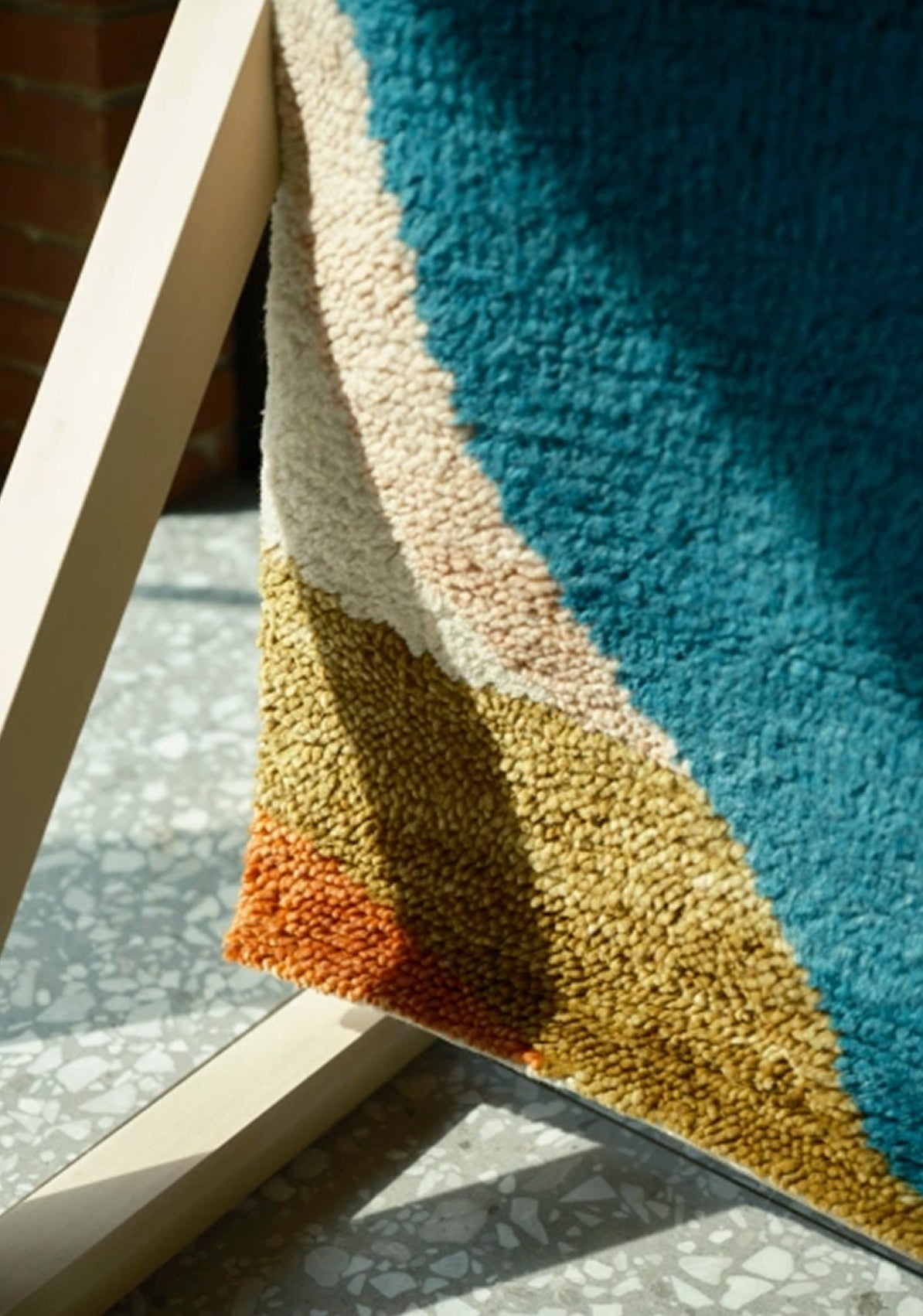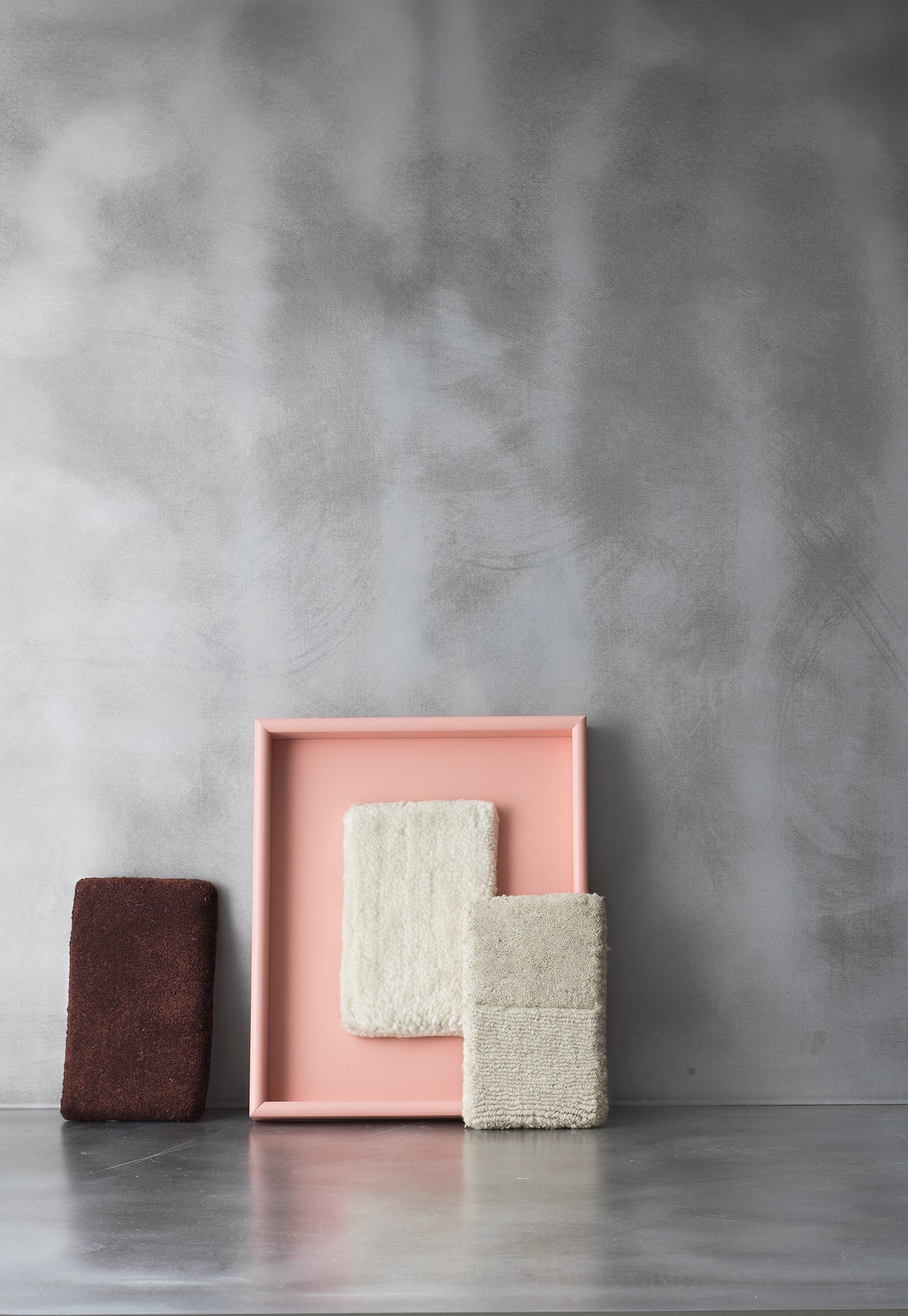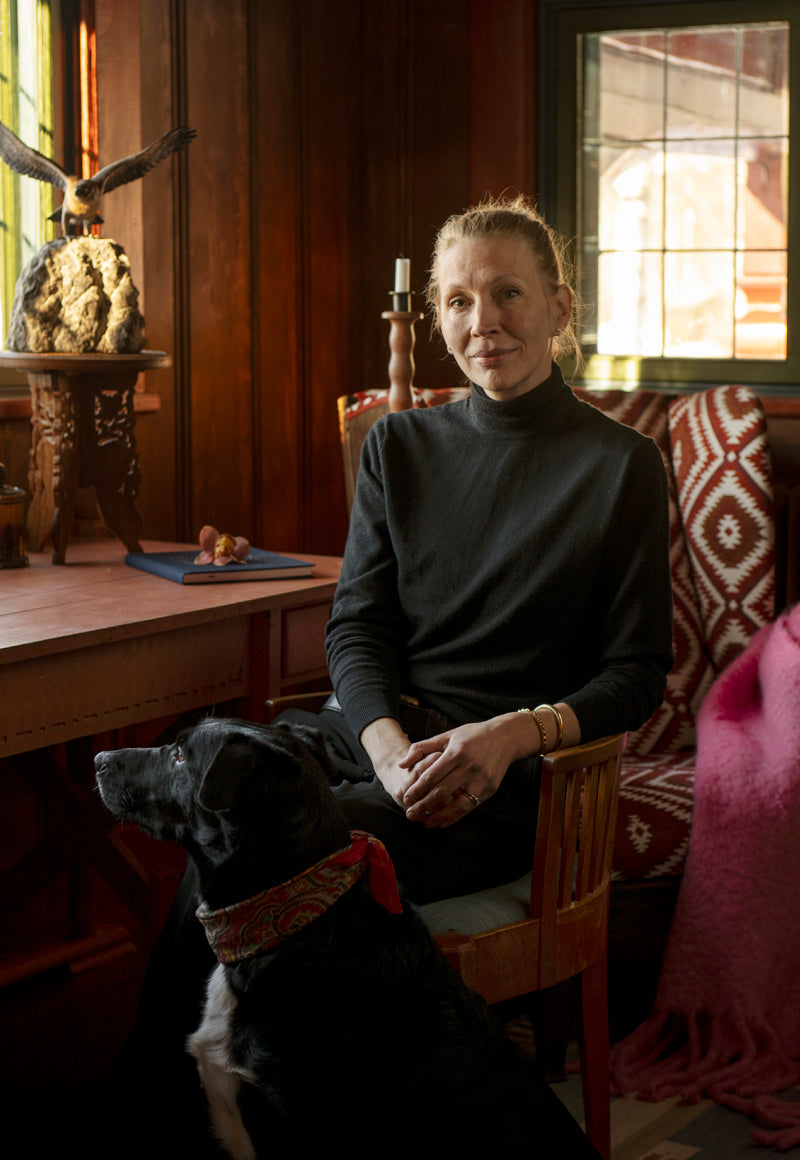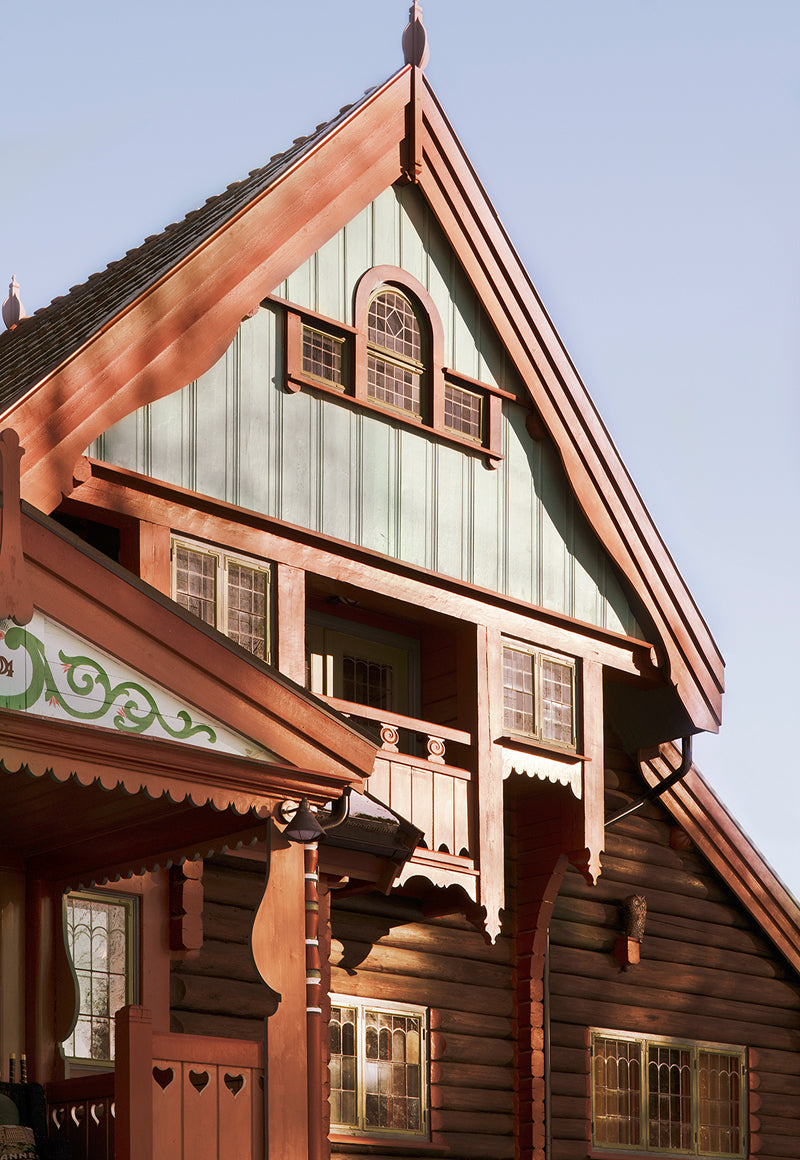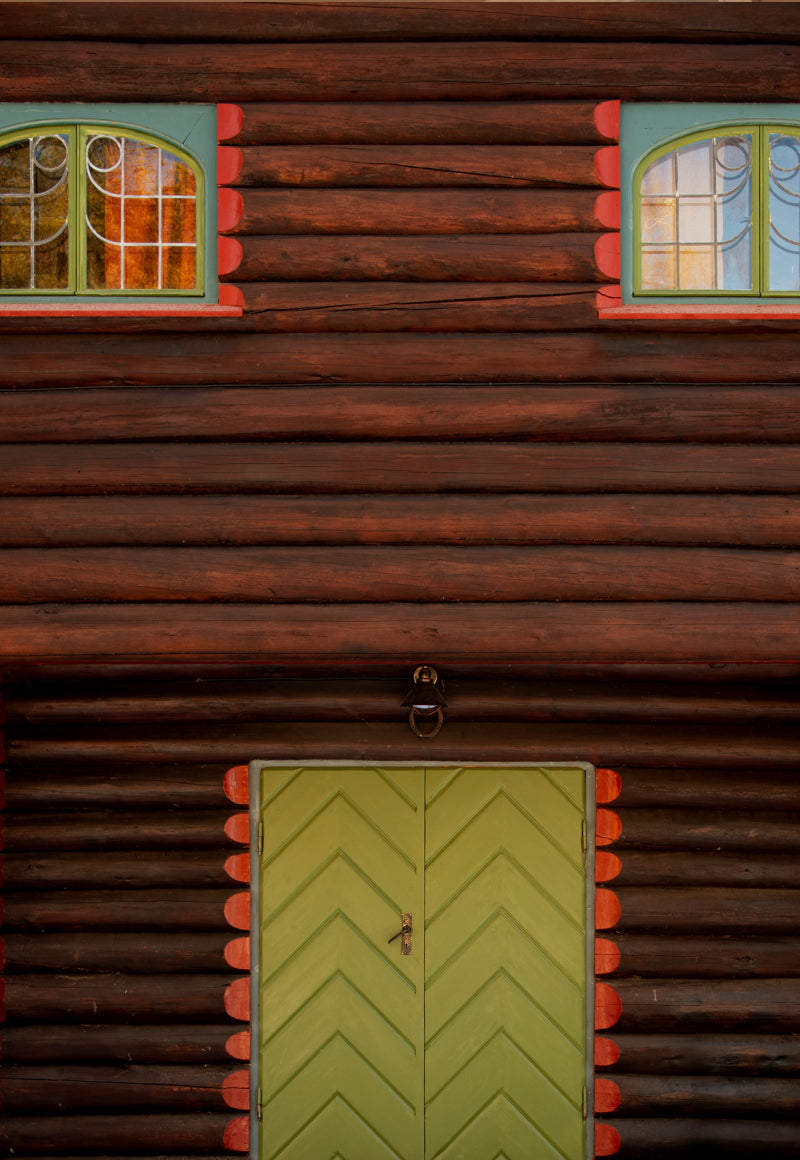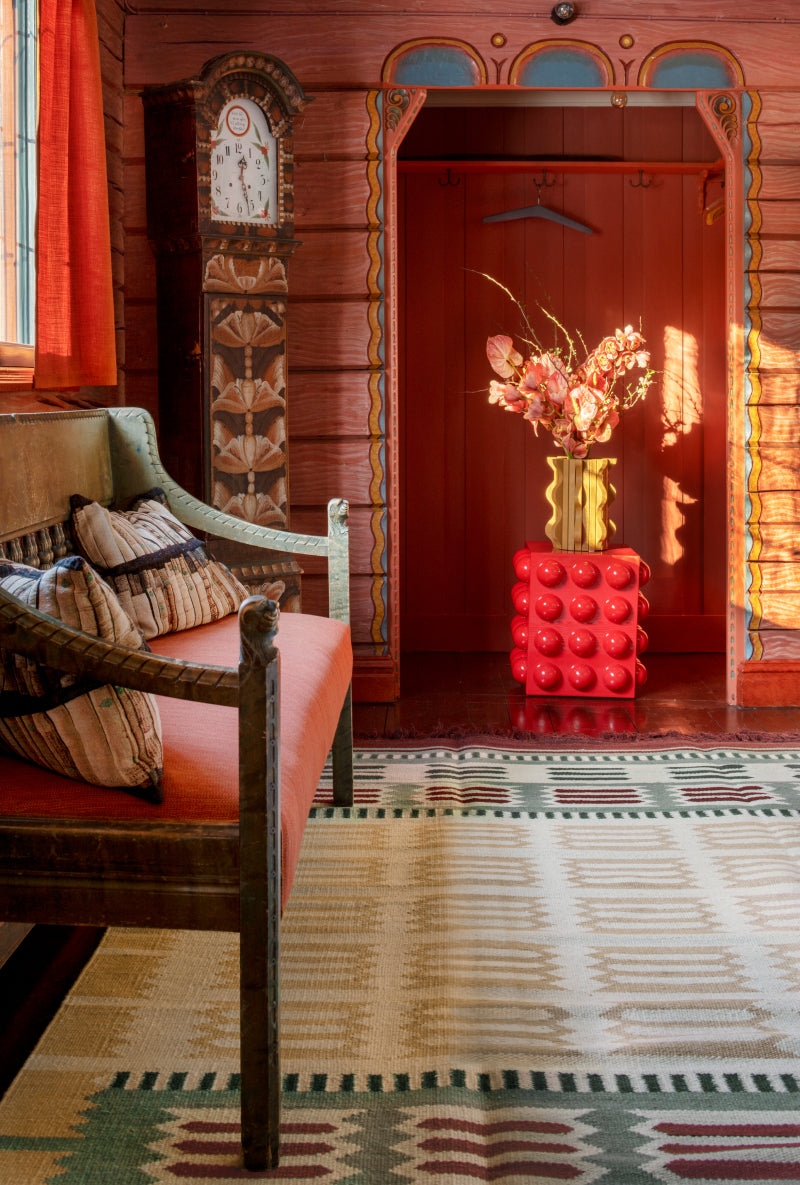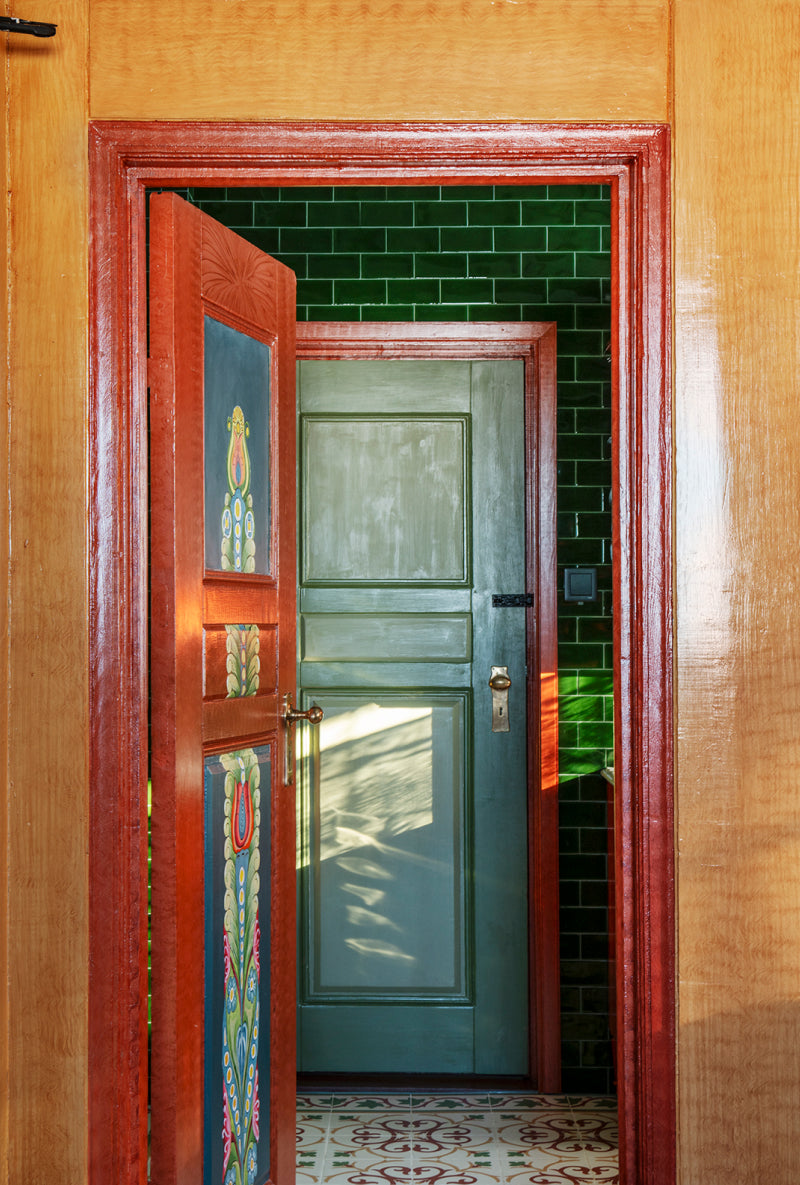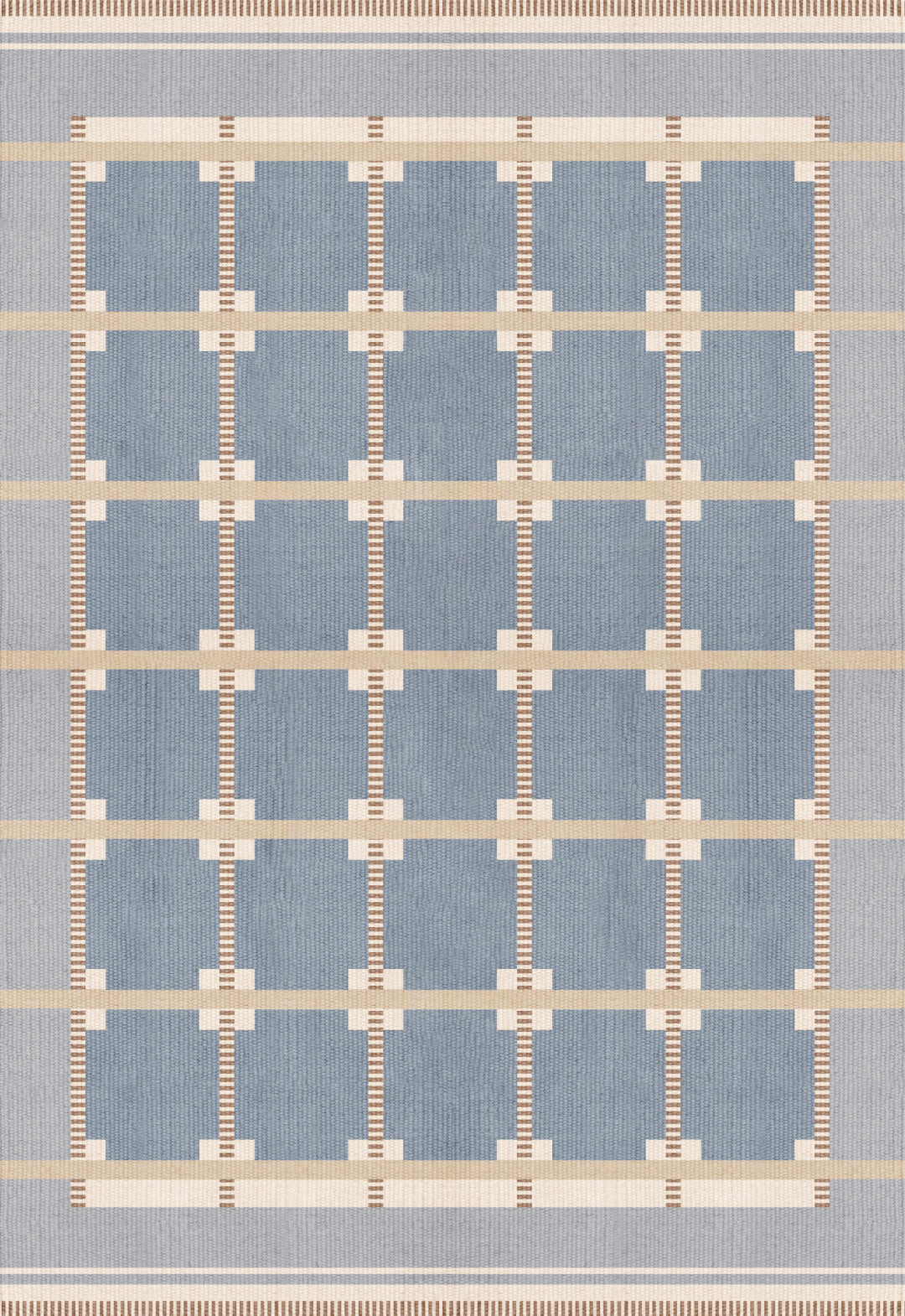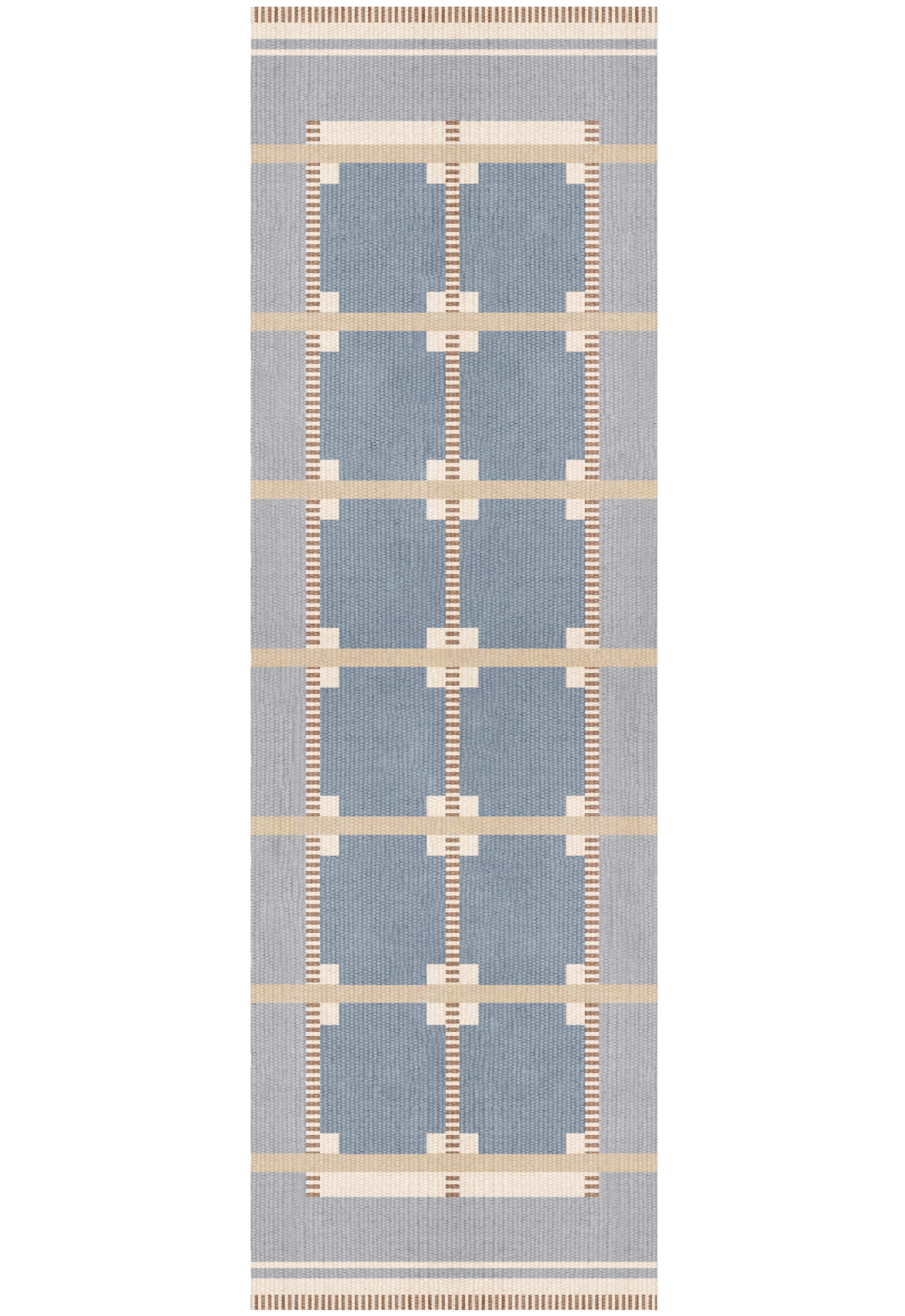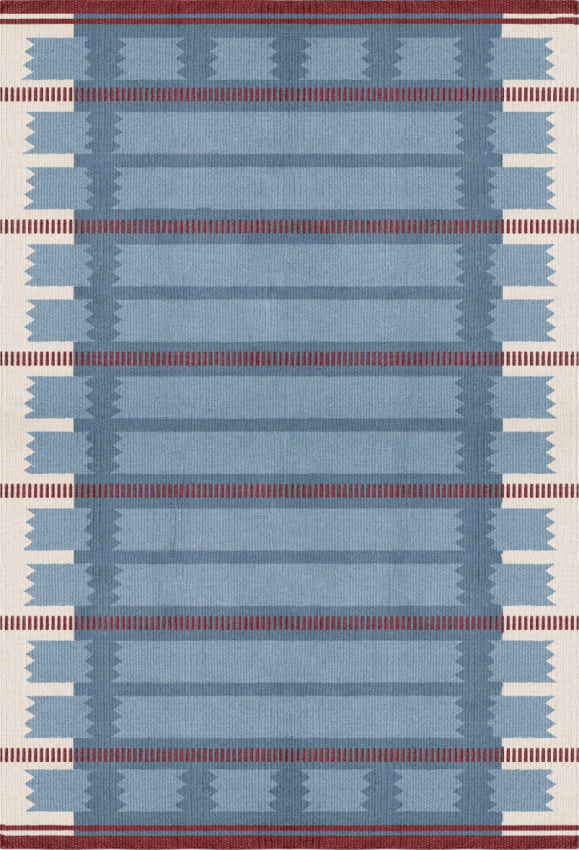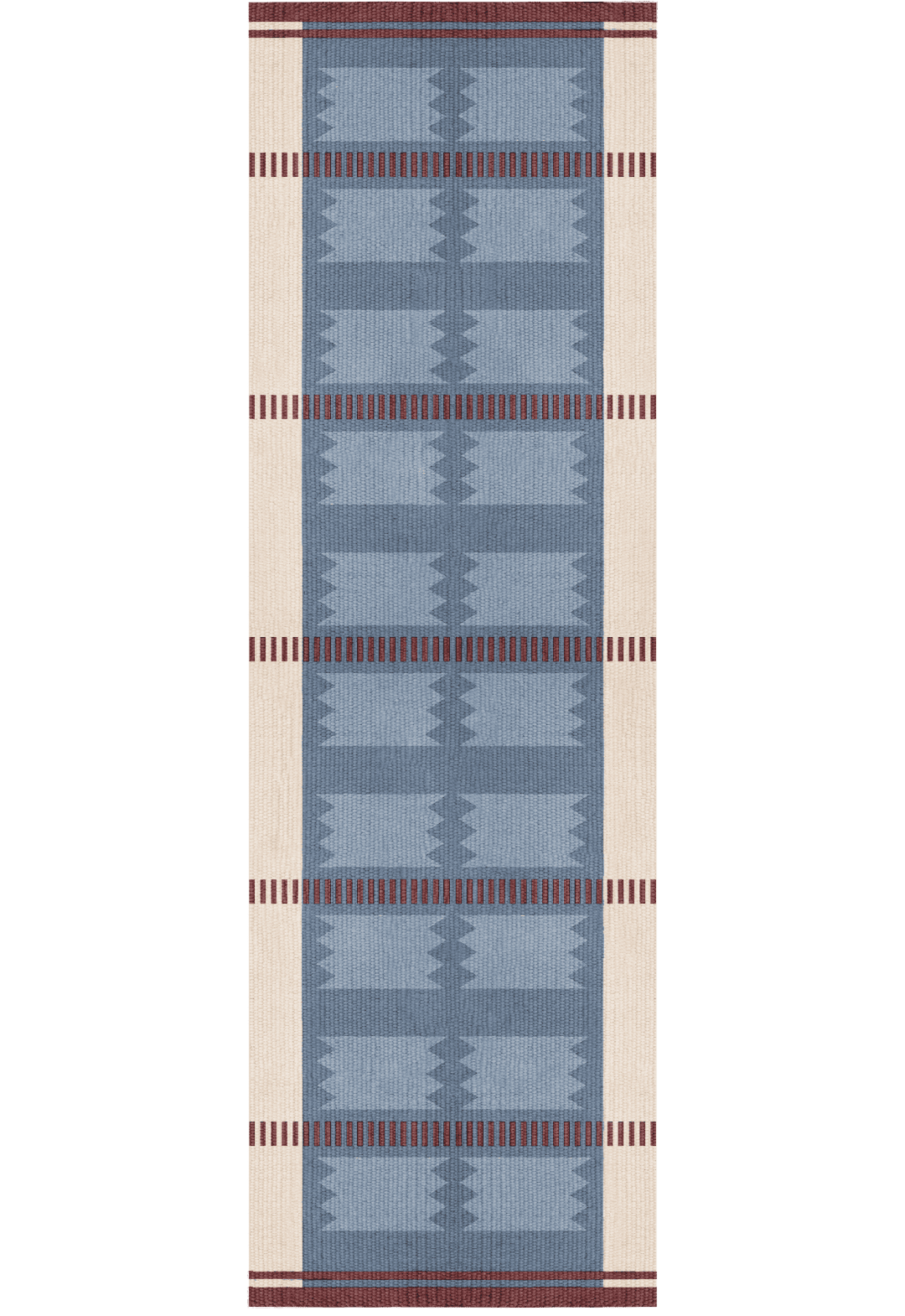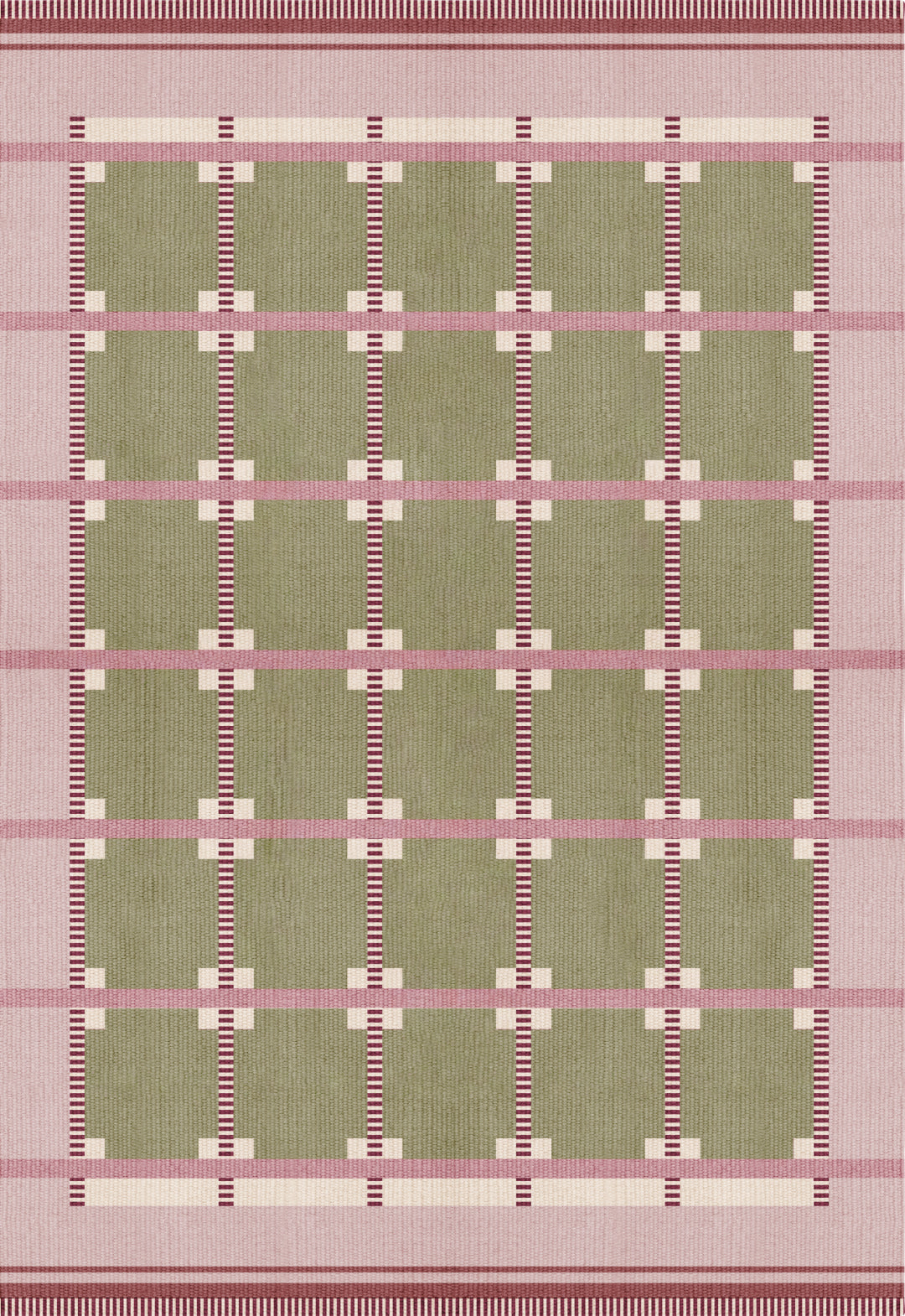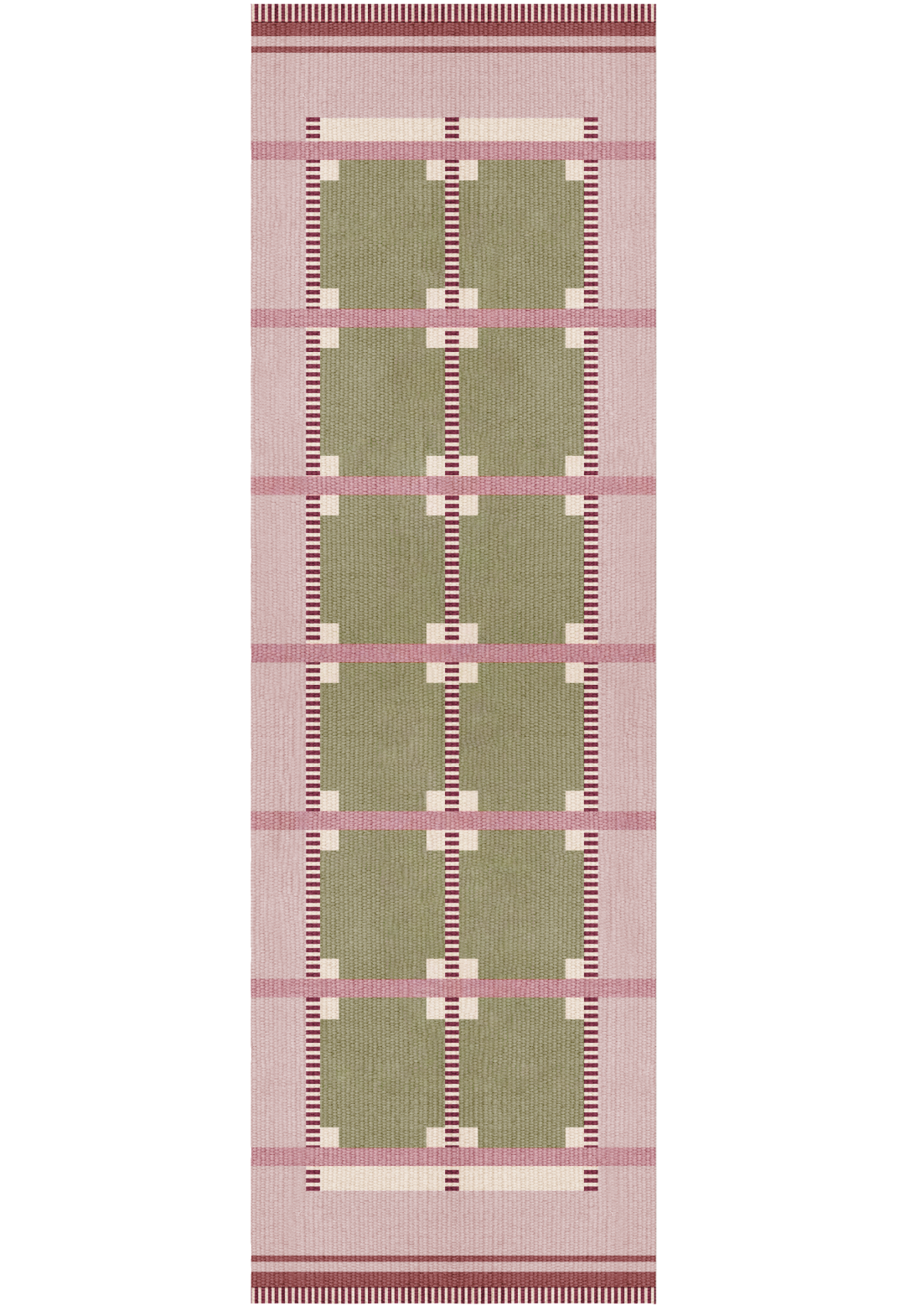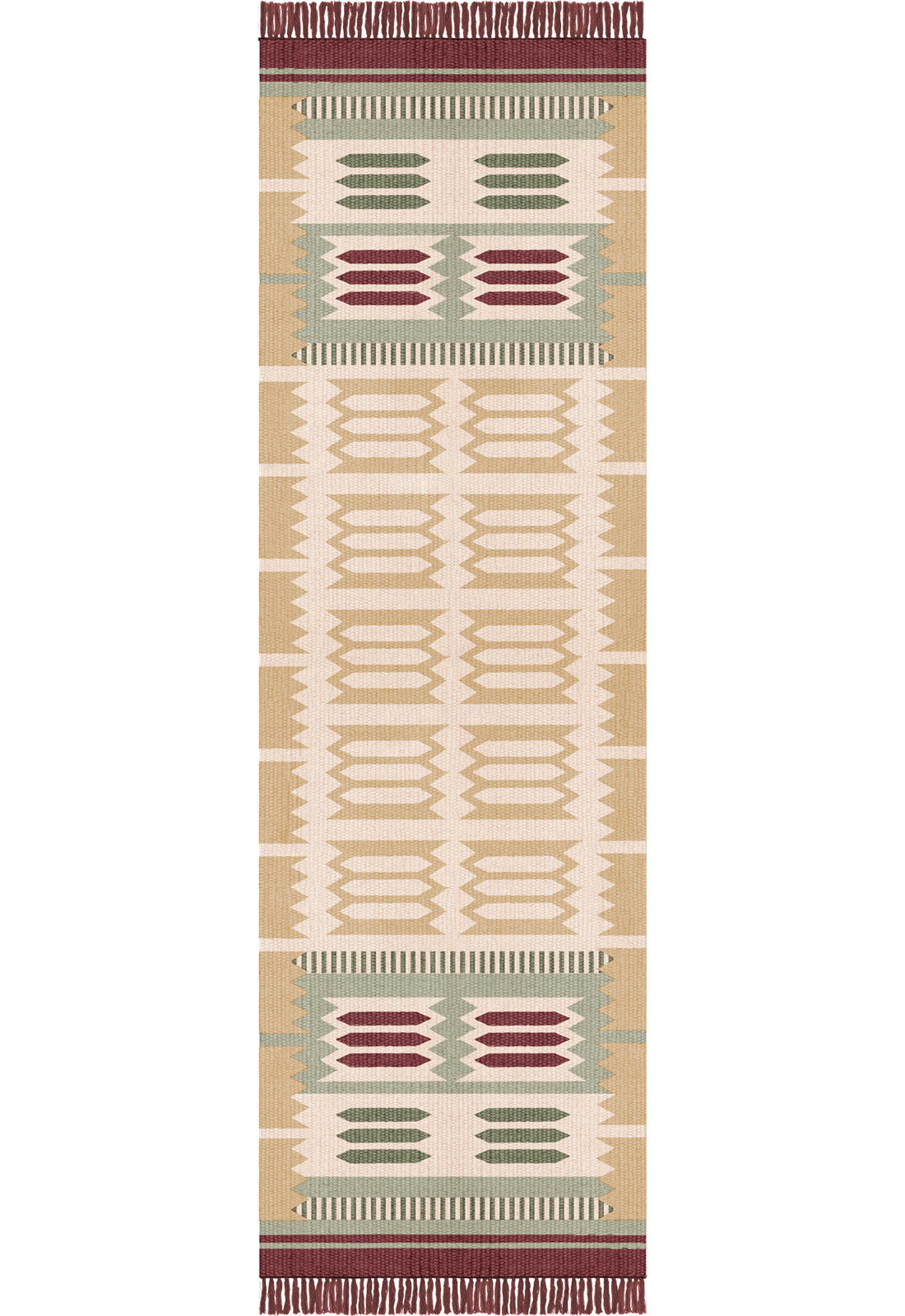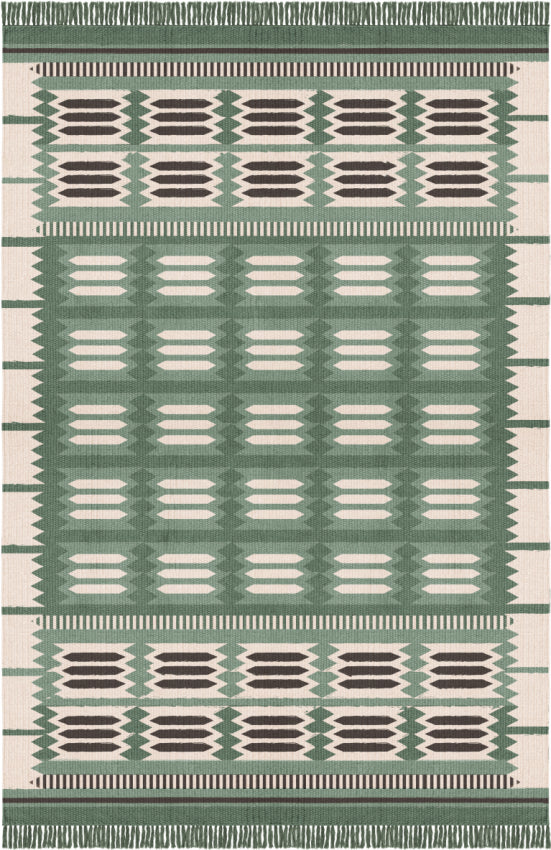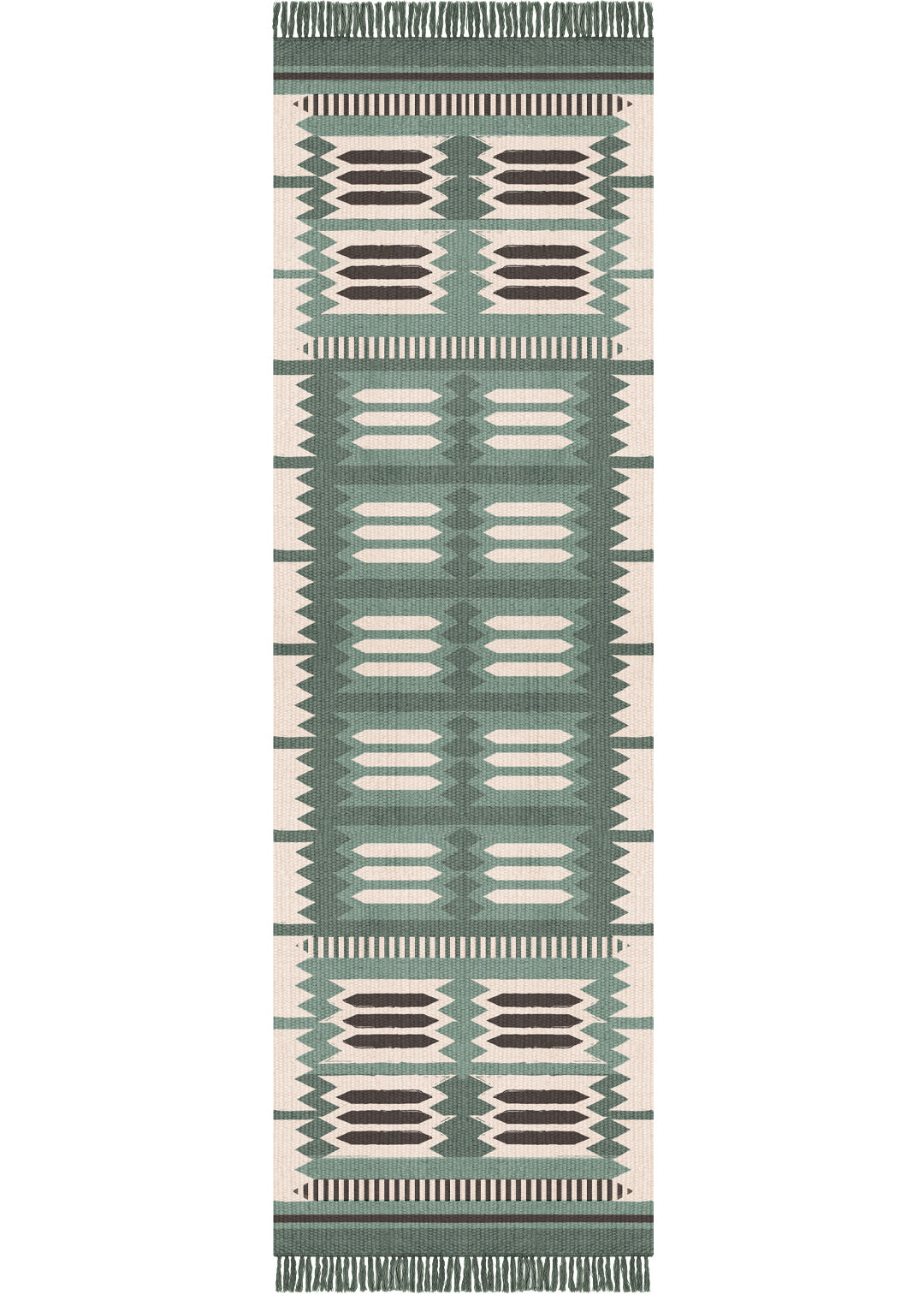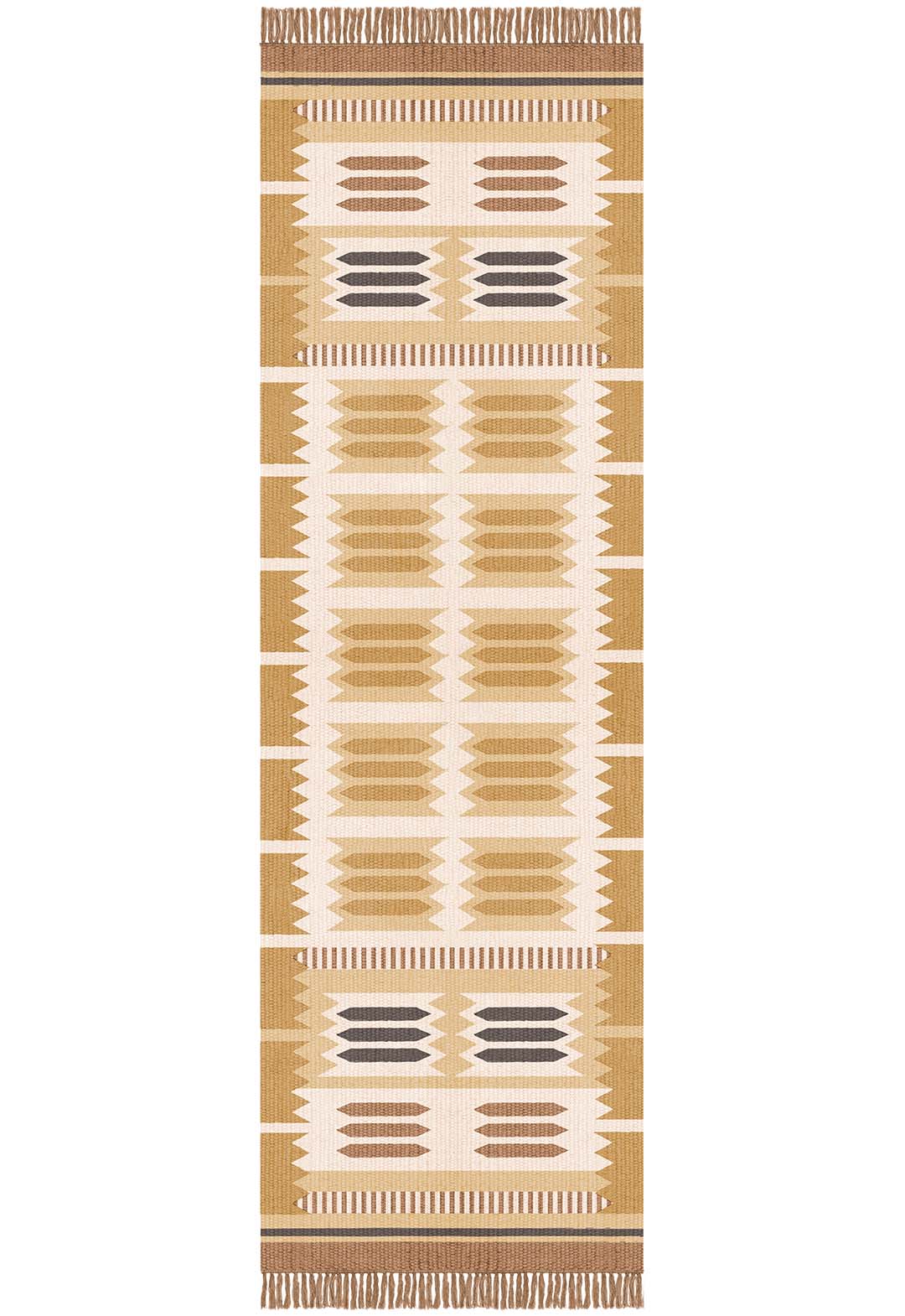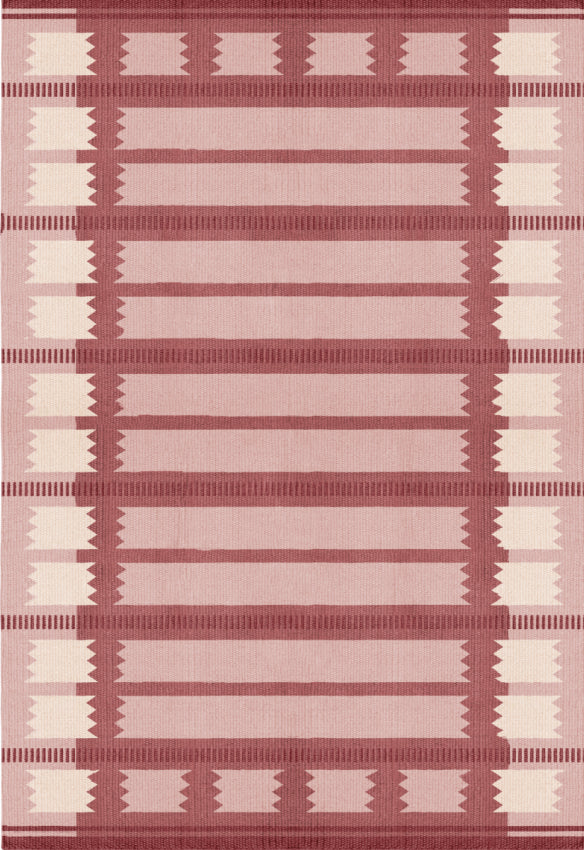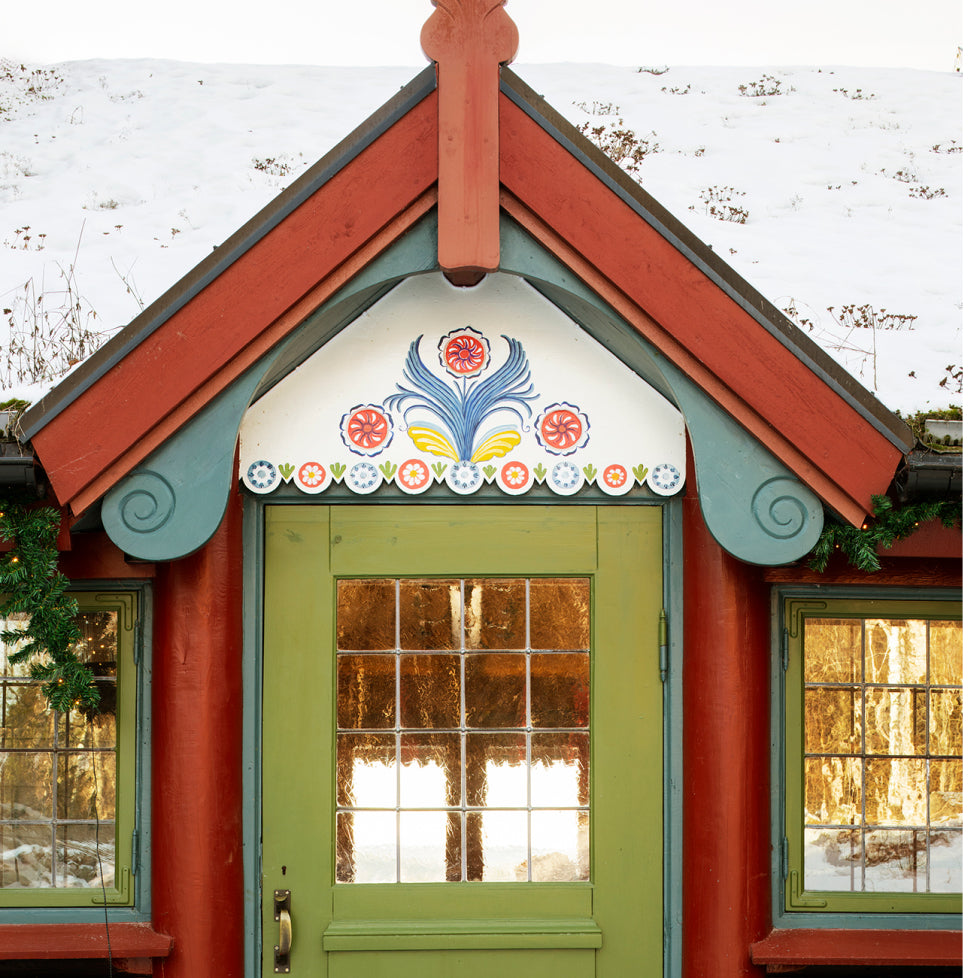
Norhaga - HISTORY IN EVERY DETAIL
Located in the heart of Dalarna stands Norhaga, an architectural gem built in 1903 where history and craftsmanship meet. When the couple Pim and Svante Tegnér first saw the house, they fell in love with its National Romantic character. With great care, they have restored and revived its former glory while also adding their own personal touch.
“The unexpected color choices – blue, red, yellow, turquoise, and green – come together in perfect harmony. In this house, white is not an option”

The renovation work spanned three years, with the goal of preserving the home’s unique character and history. Driven by a passion for period-specific details and bold color choices, the couple has created a home where restored original furniture interacts with modern elements – resulting in a space that feels both unique and dynamic.
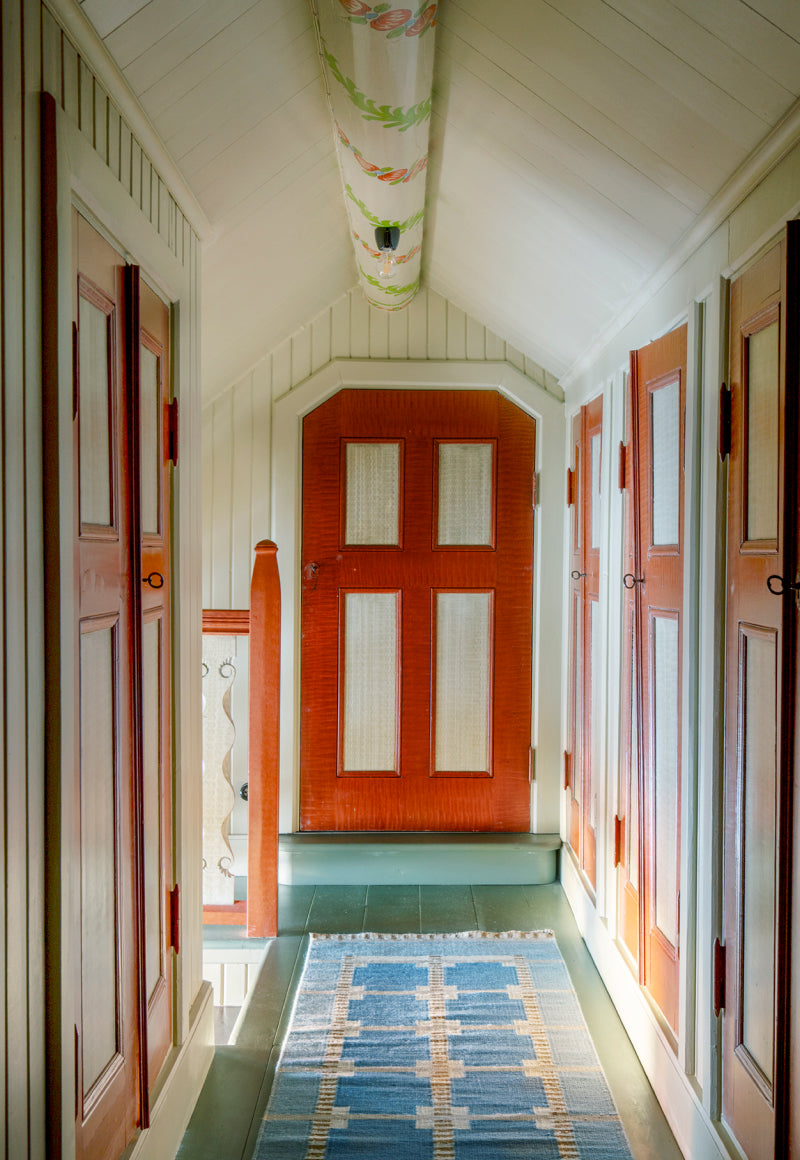
What was the condition when you moved in? Have you done any restoration work?
“The house was in dire need of renovation, and the renovation work itself lasted three years. In short, we restored exactly everything, except for the decorative paintings in two rooms. We went through the entire house from the ground up, fixing everything from the roof, electricity and water to the foundation, facade and chimneys. All surfaces have been repainted using traditional techniques, including floors, walls, and windows, in order to restore both the charm and functionality of the home.”
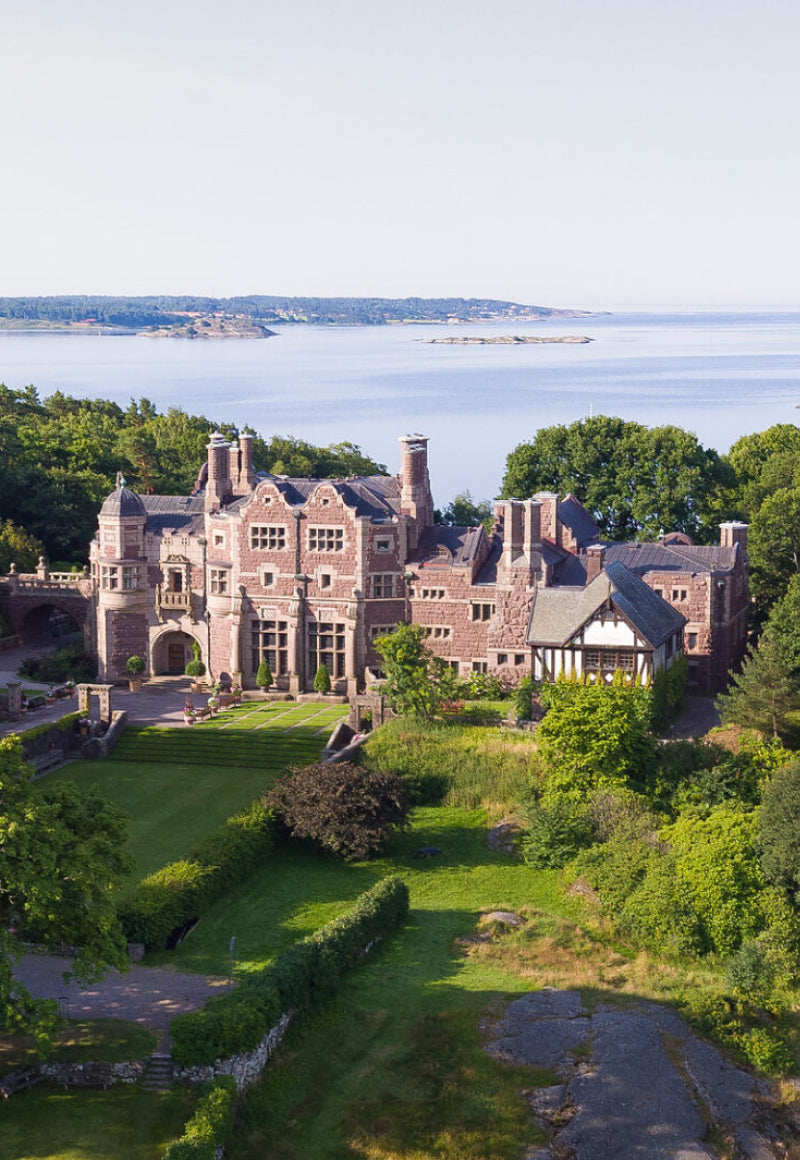
What can you tell us about the history of the house?
“This National Romantic masterpiece was built in 1904, by the miner and engineer Lars Yngström together with his wife Zi. They enlisted the help of architect Lars Israel Wahlman, who is also known for designing Tjolöholm Castle in Fjärås. Wahlman, designed not only the house itself, but also the furniture, crockery and garden, giving the house a very elaborate and coherent design.”
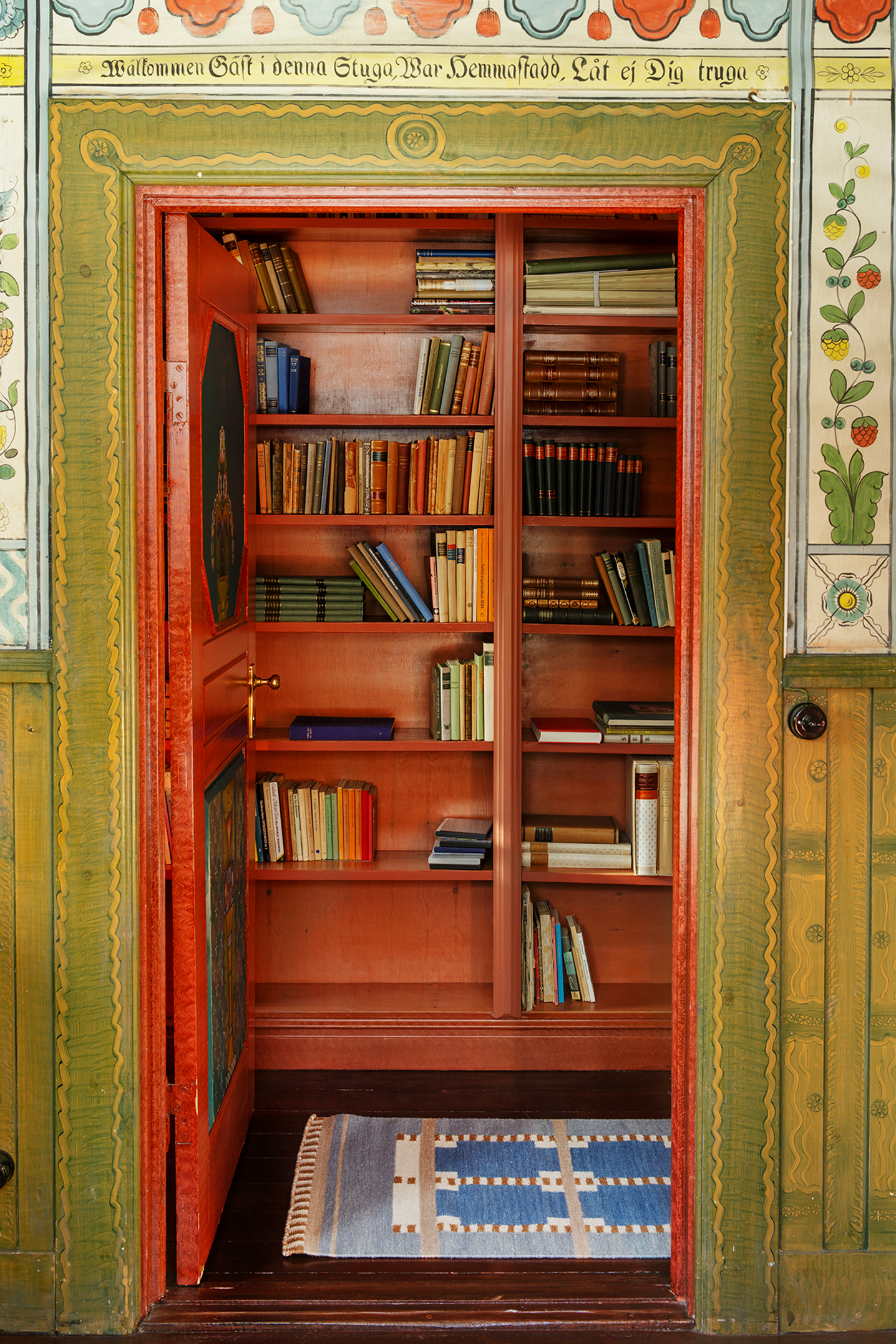
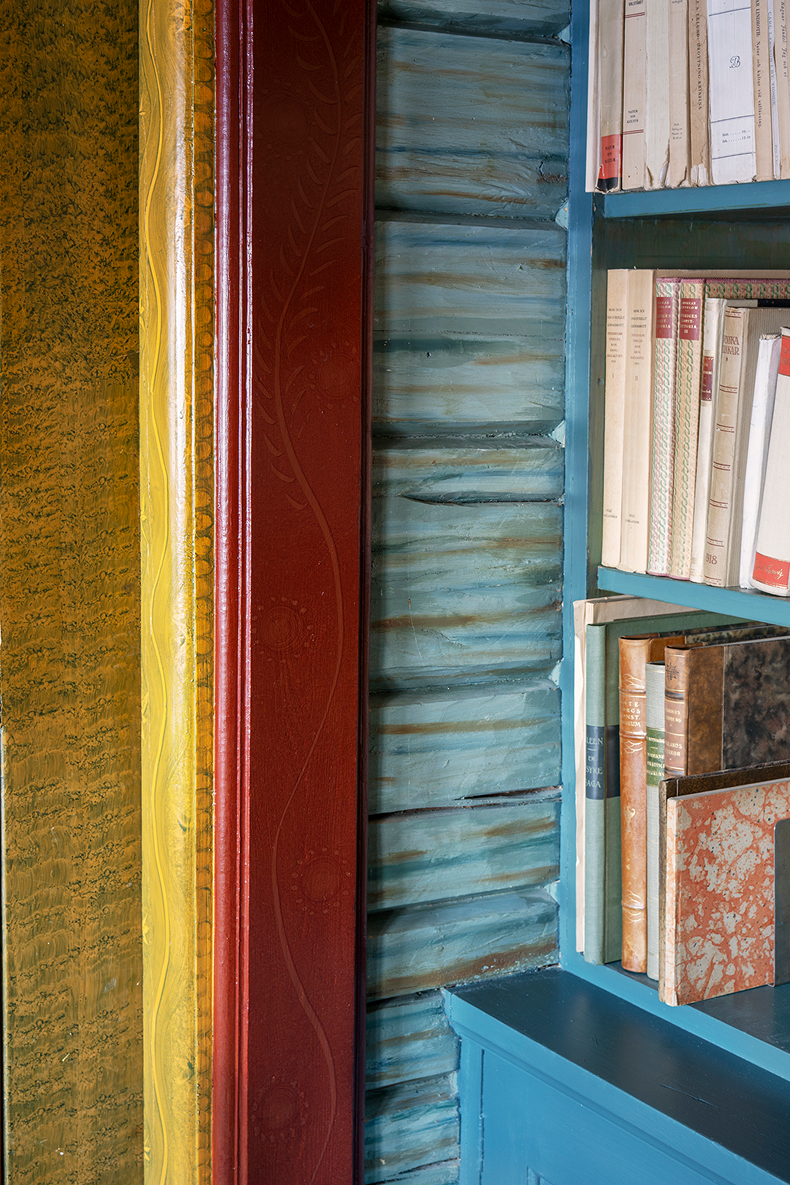
How would you describe the character of the house?
“The house has a national romantic character, with an explosion of period details and bold color choices. It's truly unique, and we've never seen a house quite like it.”
What has been the biggest challenge in decorating a house from this time period?
“The greatest challenge has been preserving the character and atmosphere of the house, despite the extensive renovations. Working with period-appropriate materials has also required a great deal of time and patience.”
How have you approached color and material choices? Do you adapt to the style of the house, or do you dare to contrast it with modern elements?
“We have chosen to preserve the original color choices as much as possible, because they are so unique in many ways and contribute to the soul of the house. We have also started the restoration of the original furniture that remains, but this work is not yet complete. Modern elements are an important contribution to the life story of the house, we see them as the 'spice' that enhances and brings to life the older character of the house.”
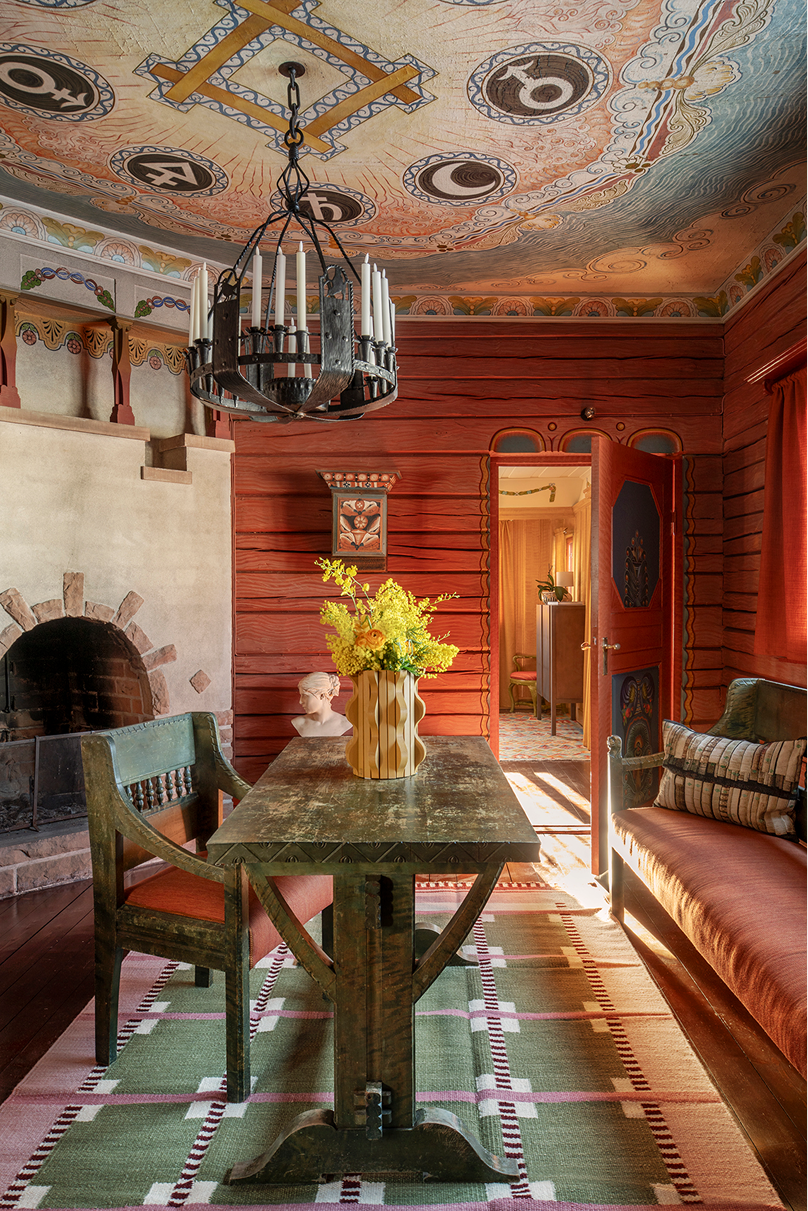
How did you select the furniture and décor? Do you have any tips for others furnishing a home from the same era?
“My main advice is to research the time period and look at other projects from the same era. It's also important to focus on planning and try to preserve the architect's basic thoughts and ideas.”

Are there details in the house that you are particularly fond of?
“I would say all the unexpected details in the timber, both inside and outside. The house is characterized by English influences and Arts and Crafts, and rich in decorative elements—small animals and floral motifs appear throughout the space. The early 20th century color choices are completely unexpected, with blue meeting red, yellow, turquoise and green in a blissful mess on the same surface, which still manages to marry into success.”
What is your favorite place in the house and why?
“A favorite spot is the music room with its view of the lake, fireplace, bookshelves and seating for afternoon coffee. It's a social space that's as beautiful in winter as it is in summer. But I also love being on the little island that comes with the house. There's something magical about walking across the 120-year-old bridge next to water lilies and seabirds.”
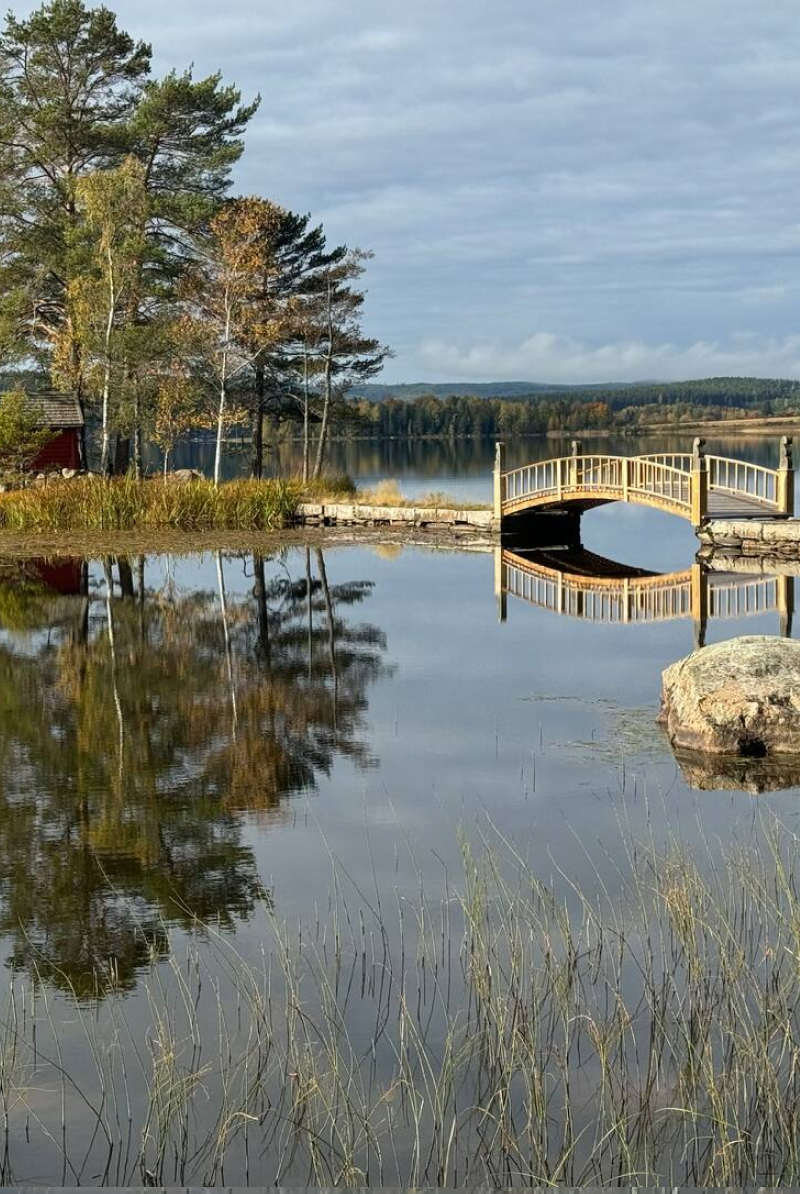
How would you describe the area around your house, and are there any places of interest nearby that you like to visit?
“The area is quiet and close to nature, and we have wonderful neighbors in the village. It feels like a place where you can relax and be close to nature. Among our favorite places are Café Skyttepaviljongen in Falun and of course the well-preserved artist's home Carl Larssongården in Sundborn. You can visit Carl Larssongården as many times as you like and always discover new details, furniture and small features. It is very reminiscent of our own home, Norhaga.”
How do you experience the sense of community here? Are local history and traditions still present?
“Dalarna is truly a stronghold of traditions, and the same goes for our village. Midsummer, Walpurgis Night, and Christmas are celebrated properly and together with our neighbors. There’s a real sense of community here, and the traditions are very much alive in a way we deeply appreciate.”
